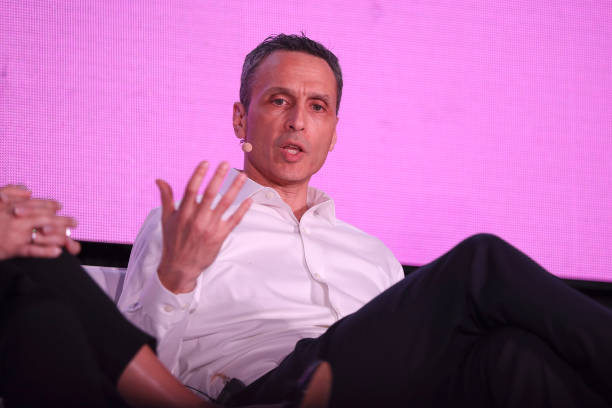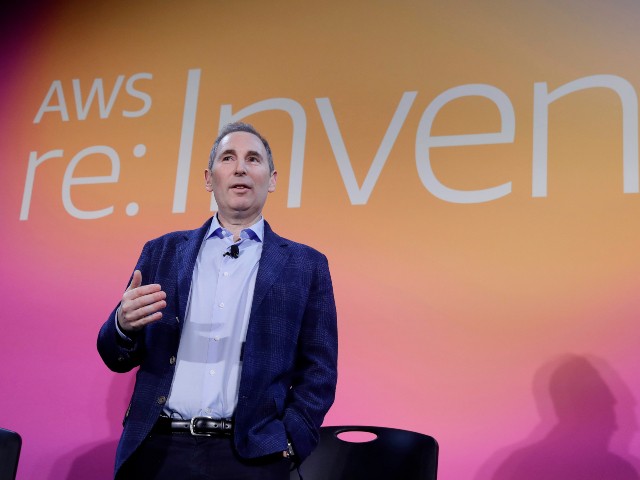HOLD ON TO YOUR WALLETS, PAPER MONEY FAILING, POLICE TO REPO VEHICLES, FINANCIAL CRISIS DEEPENS
https://www.youtube.com/watch?v=t-MTTwjlnuM
Amazon to Lay Off 9,000 *More* Employees After Cutting 18,000 in November

Amazon has announced yet another round of layoffs after letting go of 18,000 workers in November. This time the e-commerce giant will lay off 9,000 employees.
CNBC reports that Amazon, one of the world’s largest e-commerce retailers, is preparing to lay off 9,000 more employees in the coming weeks. CEO Andy Jassy made the announcement in a memo to the staff on Monday. This round of layoffs comes on top of the layoff of more than 18,000 workers in November.
Amazing is laying off employs to cut costs in the business. According to Jassy, the business made the decision considering the “uncertainty that exists in the near future” as well as the current economic climate. The second stage of the company’s annual budgeting process, known as “OP2” internally, has just been completed.
“The overriding tenet of our annual planning this year was to be leaner while doing so in a way that enables us to still invest robustly in the key long-term customer experiences that we believe can meaningfully improve customers’ lives and Amazon as a whole,” Jassy said in the memo.
The areas of Amazon’s business that are expected to be the most impacted are the company’s cloud computing, human resources, advertising, and Twitch livestreaming businesses. After going on a hiring binge during the coronavirus pandemic, the company is currently undergoing its largest round of layoffs ever. By the end of 2021, the company’s workforce had increased from 798,000 in the fourth quarter of 2019 to over 1.6 million.
Jassy, who succeeded Jeff Bezos as CEO of Amazon in July 2021, is also conducting a thorough analysis of the company’s expenses as it deals with the recession and sluggish growth in its core retail business. Amazon stopped hiring for its corporate workforce, shelved some test projects, and slowed the growth of its warehouses.
assy said that he is still optimistic about the firm’s “largest businesses,” which are its e-commerce business and Amazon Web Services. The company still plans to invest in new divisions this year despite its plans to operate more efficiently.
Following the news, Amazon’s stock fell more than two percent during Monday’s afternoon trading.
Read the full memo from Jassy at CNBC here.
Woke Vs. Woke: Google Employees Upset over Company’s Layoffs

In an open letter to Google CEO Sundar Pichai, more than 1,400 Google employees called for better management of the company’s mass layoffs. The letter calls on Pichai and his management team to remember the company’s code of conduct, which reads, “don’t be evil.”
Business Insider reports that Google CEO Sundar Pichai informed his staff via email in January that the company would be laying off about 12,000 employees and that he accepted “full responsibility for the decisions that led us here.” In an open letter, Google workers assert that “nowhere has the voice of the workers been adequately considered, and we know that as workers we are stronger together than alone.”
The workers want Google to think about freezing new hires and giving laid-off workers priority for open positions. Additionally, they want the employer to permit workers to complete pre-planned leaves like parental and bereavement leave.
Employees who have been laid off have spoken out about their experiences since the layoffs were announced. One husband claimed he and his wife were in “disbelief” when they learned they had both lost their jobs. Another ex-Googler who was caring for his mother’s terminal illness claimed to have lost his job to Insider.
One Google worker who made it through the layoffs told Insider that some of the people who were kept on were sobbing in meetings the day the layoffs were announced. Employees are furious about the layoffs and feel their concerns have not been adequately addressed by the company, according to the workers who spoke to Insider.
A request for comment from Insider made outside of regular business hours was not immediately answered by Google or the Alphabet Workers Union.
The open letter draws attention to the lack of openness and dialogue with employees during the decision-making process. The workers feel that their voices have not been sufficiently heard and that their combined strength is greater than their individual strength.
Breitbart News previously reported that one of the most high-profile layoffs was Google’s head of mental health and wellbeing.
One particularly affected employee was Kristin Maczko, who had served as Director of Google’s mental health and wellbeing team since July 2021. Nearly 15 years into her employment with the company, Maczko called her position a “dream job.” Maczko stated on her LinkedIn profile: “These last few days, I’ve experienced a wide range of emotions. I regret having to say goodbye to my many friends and coworkers at Google.”
Although she did not give an exact figure, Maczko added that many members of Google’s mental health and wellbeing team had also been let go. Google has not yet responded to requests for comment, raising concerns about how much the team has been impacted.
Many employees have expressed their confusion and frustration regarding the layoffs; some have said they received impersonal emails informing them of their termination. Many who were laid off felt suddenly cut off from their workplace when the company swiftly disabled the work laptops and accounts of those who were fired. An engineer who requested anonymity and has worked for Google for more than ten years told Insider, “It’s just not logical. People with years of experience, who are excellent workers, who had skills and knowledge, are being laid off, and they were just shooed out the door without even speaking to the managers who oversee them and have a true understanding of their capabilities.”
Read more at Business Insider here.
No One Is Immune’: Massive Layoffs Coming to ESPN

Disney is preparing to lay off 4,000 employees, and it has been reported that many of those layoffs will be at its ESPN cable sports network and its other side entertainment divisions. And insiders say no one is safe.
According to the New York Post, the list of layoffs is set to be completed sometime over the next few weeks.
Insiders have leaked information about an initial wave of layoffs to affect the jobs of some 4,000 employees. But Disney CEO Bob Iger was talking about 7,000 total layoffs in February, Breitbart News reported.

Robert Iger, Chief Executive Officer of The Walt Disney Company, attends the 95th Annual Academy Awards on March 12, 2023, in Hollywood, California. (Neilson Barnard/Getty Images)
ESPN chief Jimmy Pitaro has sent down a memo to department heads to assemble their lists of employees that are deemed “redundant and disposable.”

ESPN President Jimmy Pitaro speaks at the espnW Women + Sports Summit held at The Resort at Pelican Hill on October 22, 2019, in Newport Beach, California. (Meg Oliphant/Getty Images)
Disney is set to eliminate the jobs as part of CEO Bob Iger’s $5.5 billion budget cut plan as the company faces repeated box office bombs, billions in losses over its streaming service, and political setbacks due to its radical left-wing policies in Florida.
The layoffs are set despite the company’s reported profits of $23.51 billion, which slightly exceeded expectations of $23.44 billion.
It was also reported that the company is scaling back spending on new programming and marketing.
ESPN staffers have also been told that all cost-saving measures are on the table, and no one’s job is safe, with the most vulnerable being the on-air personalities.
In any case, the coming layoffs will likely be far worse than the 2017 round of layoffs that were said to be a “blood bath” when 100, mostly camera-facing employees were trimmed.
There have been more extensive layoffs since then, too. In 2015, the company dumped 350 workers, and in 2020 the company released 300 workers.
Last year it was reported that ESPN lost another 10 percent of its subscribers and was down 8 million customers since 2020.
Iger has said that Disney plans to remove ESPN from cable and go “direct to consumer” sometime in the future, but no timetable has been set for that switchover.
Follow Warner Todd Huston on Facebook at: facebook.com/Warner.Todd.Huston, or Truth Social @WarnerToddHuston
REMEMBER: ON TOP OF EVERYTHING ELSE YOU WILL BE GIVING YOUR JOB TO ONE OF JOE'S ILLEGALS BECAUSE THEY WILL BE HERE TO KEEP WAGES DEPRESSED.
All Hell Is Breaking Loose In The Stock Market As Major Threats Emerge
15 Great Depression Foods We Will All Be Eating Again Soon
Be Ready For Evictions As 50% Of American Workers Can’t Afford Rent Prices
Nearly half of all American workers can’t afford rent prices in most U.S. cities, according to a new report. They are at risk of becoming homeless this year as a nightmarish scenario unfolds in the rental market, analysts say. Evictions are spiking again, and in some states, eviction fillings have already soared 40% above pre-pandemic levels. Conditions are tight, with less than 5% of rental units still vacant across the country. As competition amongst renters grows, prices continue rising much faster than incomes at a time job cuts are also increasing. The combination is painting a dire picture for housing affordability, and it is threatening to disrupt the lives of millions of Americans. A new report from the National Low Income Housing Coalition showed that nearly half of Americans – or about 46% – do not earn enough to rent a one-bedroom apartment. Rents in the U.S. continued to rise in recent years as demand increased due to expensive home prices, and a worker now needs to earn about $21.40 an hour to afford a modest one-bedroom rental. The median wage in the US is about $21 an hour. And this trend is not just happening in big cities. The report reveals that a two-bedroom rental – a reasonable size for a family – would stretch the budgets of renters in the vast majority of U.S. counties. In California, where the minimum wage is $14 an hour, the cost of housing is so high that the benefit of higher hourly pay is completely erased. Today, a person in California needs to earn $39.03 an hour to afford a two-bedroom apartment and $31.06 for a one-bedroom. That is to say, a minimum-wage worker in the state would have to put in 89 hours every week just to afford the one-bedroom and 112 hours to afford the two-bedroom. Nationally, the average fair market rent is $1,718 a month for a one-bedroom and $1,956 a month for a two-bedroom, according to the report. In contrast, the average renter’s hourly wage is $18.78, an income that can absorb only $977 a month in rent without being housing cost-burdened. A household living on one minimum wage income can afford even less, $377 a month, the organization showed. Meanwhile, a nightmarish scenario for evictions is unfolding in the U.S. rental market. A recent GOBankingRates survey found that roughly one-third of Americans, or 32.56%, are worried they won’t be able to pay for rent over the next three months as they face a job loss. The ripple effects that mass evictions can have on our society are beyond scary. The human toll of losing one's home, community, and sense of security cannot be underestimated. As more and more people are pushed out of their homes and into homelessness, the fabric of our society will start to desintegrate.


No comments:
Post a Comment